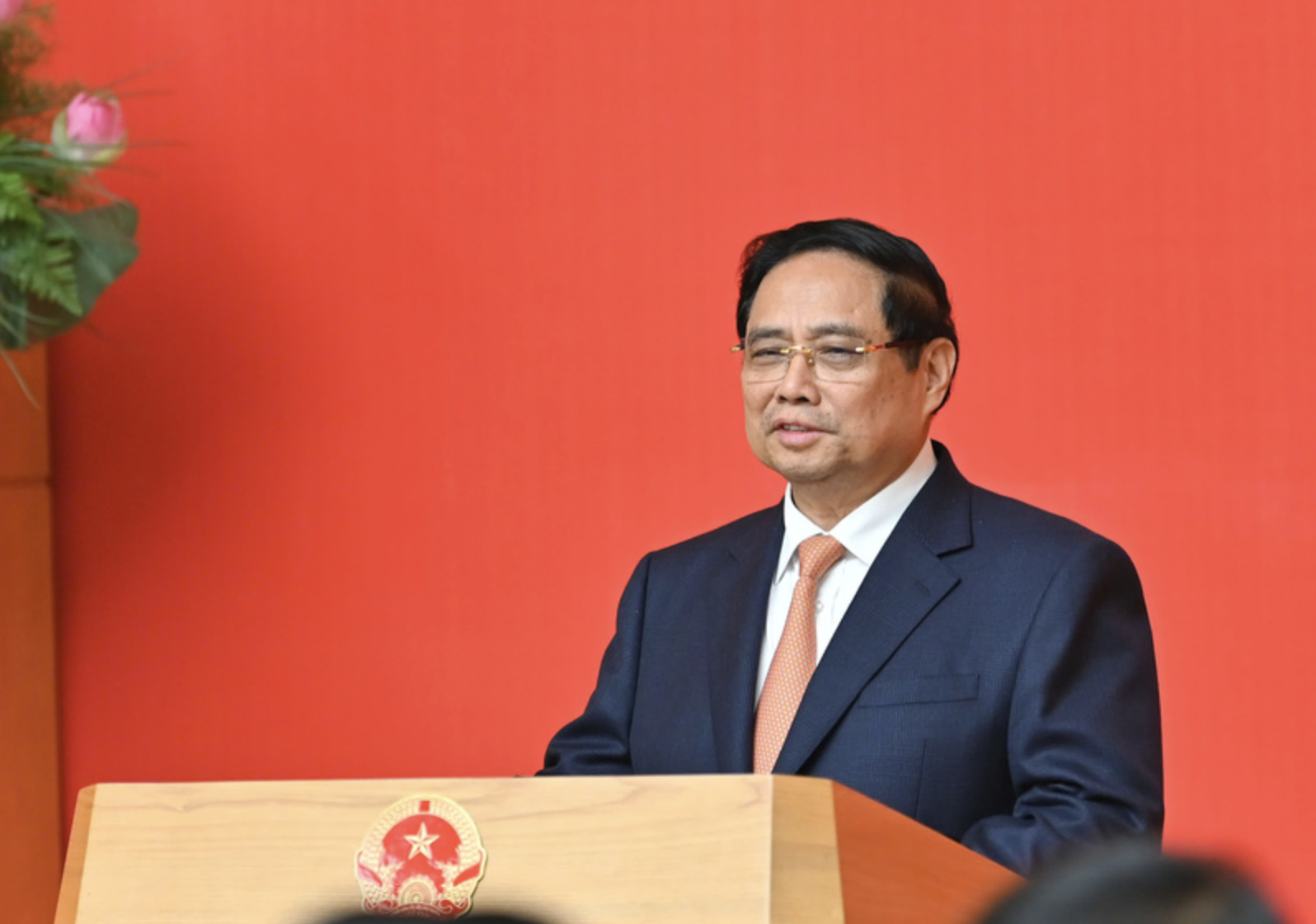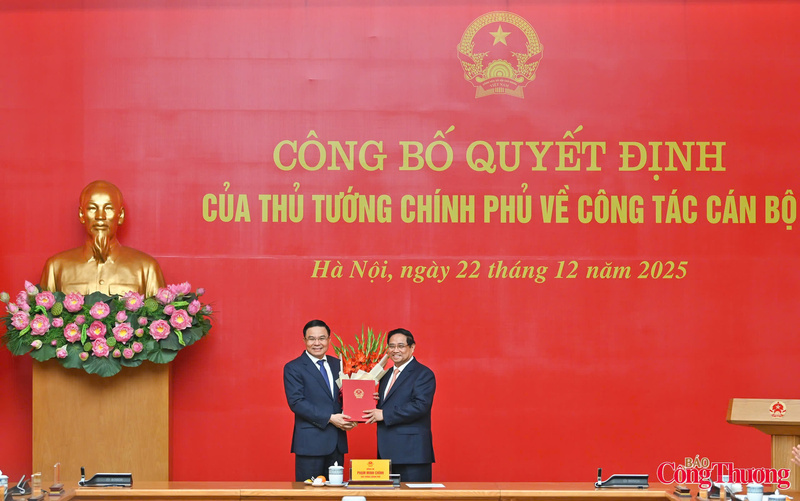
Vietnam to review over 20 years of Resolution 36 on overseas Vietnamese
19:05 | 23/03/2025 16:32 | 23/12/2025News and Events
Vietnam becomes a “highlight” in AI research
On June 10, 2025, Qualcomm officially launched its new Artificial Intelligence Research & Development (AI R&D) Center in Vietnam, marking an important milestone in its nearly two-decade journey to elevate the domestic technology ecosystem.
Following the acquisition of the Generative AI research division of VinAI - one of the leading AI research companies in Vietnam, Qualcomm’s new center combines the group’s world-class expertise with in-depth understanding of the fields of machine learning, computer vision and natural language processing in Vietnam.
This milestone is expected to strengthen Qualcomm’s capabilities in developing foundational AI models, while affirming the company's long-term presence in the research and development sector in Vietnam.
With a team of scientists, researchers and AI experts working in Hanoi and Ho Chi Minh City, the new AI R&D center will be part of Qualcomm's global AI Research group, playing a key role in developing generative and agentic AI solutions for applications in many fields such as smartphones, personal computers, extended reality (XR), automobiles and Internet of Things (IoT) applications.
Commenting on Qualcomm’s official launch of the new Artificial Intelligence Research & Development (AI R&D) Center in Vietnam, Dr. Le Thuy Duong, VNU University of Engineering and Technology (VNU-ET) said that this event marks a major turning point, not only for the high-tech sector but also for the entire domestic supporting industry chain.
Qualcomm’s R&D centers, located in Hanoi and Ho Chi Minh City, are the company's third-largest R&D facility outside the US, after India and Ireland. This center specializes in researching generative AI and agent AI solutions, applied to smartphones, personal computers, augmented reality, smart cars and internet of things devices.

When Qualcomm chooses Vietnam as its R&D “base”, the door to the high-tech supply chain opens, creating momentum for standardization and upgrading of the supporting industry.
“The fact that a leading global corporation has chosen Vietnam not only shows its confidence in the technical human resources capacity, but also puts Vietnam in a strategic position in the global R&D chain on AI and semiconductors,” Dr. Le Thuy Duong said.
According to Dr. Le Thuy Duong, in the short term, Qualcomm’s presence will lead to a strong wave of demand for high-tech components, materials and auxiliary services, opening up direct opportunities for Vietnamese supporting industry enterprises. Manufacturers of multi-layer printed circuit boards, modules, high-performance heat sinks, packaging materials and precision mechanical enclosures will be awakened to meet the strict technical standards of AI projects and smart devices.
Additionally, the group of enterprises providing measurement, inspection and product standardization services such as electromagnetic interference testing, radio wave testing, electrical safety, and equipment security also has more room for development. This is an indirect order from the R&D, testing and quality assessment process that has rarely appeared in the Vietnamese market before.
In addition, in the medium term, the impact of this center will change the structure of Vietnam's supporting industry in the direction of shifting from simple assembly to high-value component and module production. Qualcomm aims to develop embedded AI applications (AI on-device) for many fields, including automobiles, XR and industrial IoT. This means that Vietnamese enterprises can participate in the hardware supply chain for long-term, high-standard products, such as automotive ECUs, industrial sensors, or signal processing modules for XR glasses.
At that time, the order cycle was longer, profit margins were higher, and the ability to maintain a position in the supply chain was also more stable. Qualcomm's presence also encouraged Vietnam to form “R&D and supporting production clusters” around Hanoi - Ho Chi Minh City - Da Nang, creating a new supporting industrial cluster associated with high technology.
A push to standardize supporting industries
Dr. Le Thuy Duong also said that another fundamental impact is on human resources and standardization of industrial processes. Qualcomm operates according to an international standard R&D model, requiring suppliers to meet global quality standards: ISO 9001, IATF 16949 for automotive components, ISO 26262 for functional safety, or APQP/PPAP processes in the production of high-tech components.
“This forces Vietnamese supporting industry enterprises to invest in human resources, management and technical infrastructure: Training “hybrid” engineers (who understand both hardware and embedded AI programming), building international standard testing labs, and developing traceability systems - data security according to foreign partners' requirements. If they meet these requirements, enterprises will step up to the position of tier 2, or even tier 1 suppliers in the global chain,” Dr. Le Thuy Duong assessed.
However, according to Dr. Le Thuy Duong, every opportunity comes with challenges. First, a potential brain drain may occur as skilled engineers are drawn to the attractive R&D environments offered by major corporations. Second, technological and legal barriers, such as regulations on technology export, data security, and intellectual property control, could create obstacles for smaller businesses if there is no proper guidance and support from the government.
Third, the lack of internationally accredited laboratories remains the biggest bottleneck. Vietnam currently has only a few facilities capable of conducting RF, EMI, or industrial IoT testing. Without timely investment, Vietnamese supporting industry enterprises may remain confined to low-value, primary assembly stages.
“Therefore, from a policy perspective, the State needs to have a strategy of “going along with R&D” in which it encourages investment in international standard testing labs; supports preferential credit for supporting industrial enterprises participating in high-tech projects and especially builds legal “sandboxes” for AI, semiconductors and supply chain security,” Dr. Le Thuy Duong said.

The boost from Qualcomm not only puts Vietnam on the R&D map, but also helps the supporting industry reposition its role.
In addition, there should be a program called “Industrial Engineers supporting Industry 4.0,” connecting universities, research institutes and businesses to train engineers specializing in design, manufacturing and testing for large technology corporations. If implemented synchronously, Vietnam will not only benefit from FDI capital flows, but also take advantage of global knowledge, technology standards and management processes.
From a business perspective, it is necessary to proactively take shortcuts by choosing specific niche segments, such as antenna modules for XR devices, heat sinks for AI chips, aluminum casings for mobile devices, or circuit boards for industrial gateways. Instead of chasing quantity, focus on improving quality standards and international compatibility, because that is the key to entering the high-end R&D chain. At the same time, supporting industry enterprises should actively participate in pilot projects or cooperate with domestic R&D centers to learn the standards, processes, and working methods of multinational corporations such as Qualcomm.

19:05 | 23/03/2025 16:32 | 23/12/2025News and Events

19:05 | 23/03/2025 16:30 | 23/12/2025Trade

19:05 | 23/03/2025 23:26 | 22/12/2025Industry

19:05 | 23/03/2025 23:19 | 22/12/2025News and Events

19:05 | 23/03/2025 14:41 | 22/12/2025News and Events